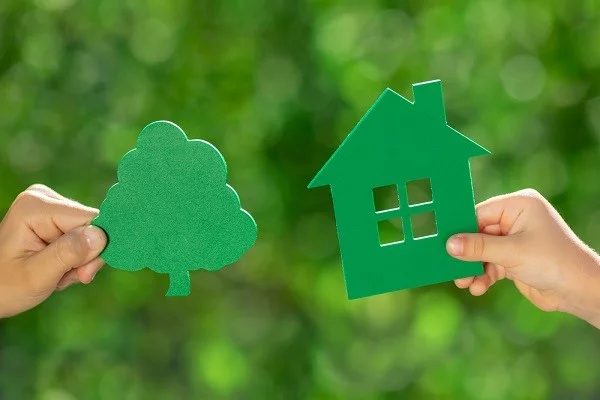Discounts on Green Mortgages for Energy Efficient Landlords

With the upcoming changes to EPC (Energy Performance Certificate) rules, interest in green mortgages is on the increase, with many landlords qualifying for great deals on BTL mortgages.
Green mortgages offer incentives to landlords who are willing to upgrade their properties to a high energy efficiency level.
Although there are currently only a few lenders offering green mortgages, there is an expectation that many more lenders will follow suit in the near future. Green mortgages are available, not only to buy-to-let landlords but also to regular home buyers and those looking to remortgage. Buyers are offered a discount on interest rates for homes that are deemed to be energy efficient.
The first green mortgages were offered in June 2021 by specialist BTL lenders, Land bay. The response from buyers and landlords has been extremely positive, with the prediction that many more lenders intend to offer the same type of mortgage product in the near future.
What is an EPC?
An Energy Performance Certificate is a certificate that measures just how energy efficient a property is, which is then awarded a rating ranging from A to G, with A being the most efficient and G the least efficient.
A property that is highly efficient and emits minimal greenhouse gases will be assigned a rating of A, whereas a G rating indicates poor performance in both efficiency and emissions.
An EPC rating inspection is carried out by a qualified energy assessor, who will estimate the average energy use. The assessor will take into account things like hot water, electricity, and gas costs, as well as levels of carbon dioxide emissions when rating a property.
Energy Performance Certificates also suggest improvements that can be made to improve efficiency, with an estimate of the costs of the changes needed and the potential savings the improvements will bring.
EPC’s for rental properties
Rental properties have been required to have an EPC since 2007, resulting in the government now having energy data for around 50% of residential homes in the UK.
Approximately 58% of houses and flats have an energy-efficient rating between D and G. This is largely due to the large number of old houses in the UK and is not surprising when considering that around 20% of all housing was built before 1919.
In direct contrast, 95% of new homes in the UK have ratings between A and C, with the majority having a rating of B.
Landlords have been required, since 2018, to have a minimum EPC rating of E, but new government rules mean that this will change by 2025 when landlords will be required to improve to a C rating for all new tenancies. This will be followed by all existing tenancies reaching the same C rating by 2028.
The changes are due to the ongoing global warming crisis and are part of the government’s strategy to reach the environmental target of zero emissions by 2050. Housing is estimated to contribute 16% of total carbon dioxide emissions, making it imperative that all homes are improved when it comes to energy efficiency, irrespective of whether they are owned or rented.
For landlords to qualify for a discounted green mortgage, the property must have a rating of at least C. Green mortgages are also available for new-build homes.
How can I improve energy efficiency in my property?
There are a few simple things you can do to improve energy efficiency and lower carbon emissions in your home. You can make small changes, like changing lightbulbs, or bigger improvements, such as new double glazing, floor and wall insulation, and solar panels, all of which are highly effective.
The gas boiler is the biggest problem when it comes to carbon dioxide emissions, which can be improved by upgrading to a combination boiler or heat pumps, which are considerably more environmentally friendly than the old-style boilers.
